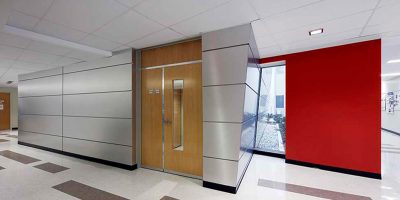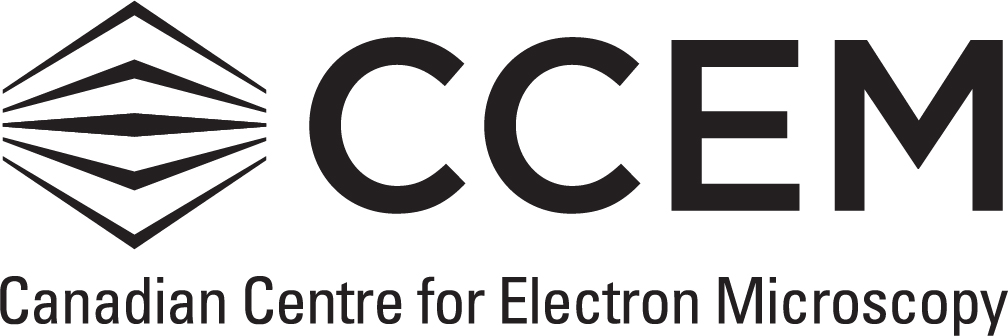Frequently Asked Questions

Explore our list of FAQs to help navigate the CCEM, from general to instrument specific questions.
For those questions not addressed here, please contact the staff member responsible for the specific instruments (bottom of the page) or the facilities manager.
Dr. Brian Langelier
McMaster University
Canadian Centre for Electron Microscopy
A. N. Bourns Building B161
1280 Main Street West | Hamilton | Ontario | Canada | L8S 4M1
Directions to the CCEM:
The CCEM is located at McMaster University in the basement of the Arthur Bourns Building (ABB) room B161. To reach the CCEM, follow directions to ABB on the map and the directions to campus.
Directions to the CCEM@FHS:
The CCEM@FHS is located at McMaster University in the hospital room HSC-3N38. To reach the CCEM, follow directions to the hospital on the map and the directions to campus.
Expandable List
What does atom probe tomography (APT) tell us about a material?
APT specializes in atom-by-atom material analysis, giving sub-nm spatial resolution and near-ppm elemental sensitivity (material-dependent) in 3D. The volumes of material collected are very small, typically < 300 x 100 x 100 nm3. It is best suited to high-resolution composition measurement and elemental mapping of nanoscale material features. Although not a requirement, APT often is best employed in combination with TEM analysis.
What materials are suitable for APT?
APT is easiest for hard, consolidated materials (e.g. metals, oxides, etc.) but can be applied to other materials as well. Thin films can also be analyzed by APT if they are able to be well-bonded to a suitable substrate. The more homogeneous and conductive a material is, the more ideal of an APT sample it would make, but heterogeneous non-conductive materials are acceptable.
How are APT samples prepared?
APT requires needle-shaped samples of approximately 150 nm diameter. These are typically prepared via focused ion beam (FIB) extraction of sample material onto microscale pre-fabricated Si posts, which is then sharpened with the FIB. This requires samples be submitted that are suitable for SEM.
If your sample is metallic, and the feature of interest is regularly-occurring in the microstructure (i.e. can be found approx. every 100 nm), then electropolishing can also be used. Samples for electropolishing should be ground/cut into “matchsticks” of ~ 0.5 x 0.5 x 10 mm3, with a cross-section that is as square as possible.
What does APT data look like?
APT data – once reconstructed – is a 3D point cloud where each point represents an evaporated ion (atom or combination of atoms). In these data, the 3D spatial coordinates and elemental identities of each point are known. The overall dataset takes the shape of the original needle specimen (i.e. a truncated cone).
From an APT dataset, we can obtain: composition measurements of individual phases, 1-D composition profiles, 2-D composition maps, statistical measurement of segregation or clustering, number density and shape/size of fine phases, and more.
How do I get started with APT?
Talk to the Gabriel Arcuri at the CCEM, who will consult you on your planned analysis and guide you in specimen preparation. An excellent text to familiarize yourself with APT is: B. Gault, M.P. Moody, J.M Cairney, S.P. Ringer, “Atom Probe Microscopy” Springer, 2012.
How do I book an Auger Electron Spectroscopy Experiment?
Please contact operator Travis Casagrande.
How do I prepare a sample for Auger Electron Spectroscopy?
The Auger operates in ultrahigh vacuum, so sample cleanliness is more rigid than a typical SEM. Please contact Travis Casagrande for sample specific information.
What is the maximum allowable size for a sample?
The sample must fit within a circle with a diameter of 19 mm and must not be taller than 5 mm.
Can I get trained to use the Auger Electron Spectrometer?
Prior to obtaining Auger training you need to have SEM operational experience. Furthermore, the need for training will be evaluated based on the practical need of the instrument for each individual. If many experiments are required over a long period of time instrument training is possible; if only a few experiments are needed, it is recommended that the user works with an operator.
What is the maximum allowable size for a sample?
The FIB takes a sample size that would typical fit into an SEM.
Can I get trained to use the FIBs?
Prior to obtaining FIB training you need to have SEM operational experience. Furthermore, the need for training will be evaluated based on the practical need of the instrument for each individual. If many experiments are required over a long period of time instrument training is possible; if only a few experiments are needed, it is recommended that the user works with an operator. Please contact the facilities manager to inquire about FIB training.
How do I get a CCEM account?
The CCEM is always happy to welcome new users. The first step is to contact the facilities manager or a member of the technical staff to discuss your proposed job, any questions about your material and the required sample preparation.
New academic users need to create an account. All users with new samples must provide the facility manager with a description of the sample. Following a feasibility review of the proposed work by CCEM staff, instrument time and training, if applicable, is scheduled with staff.
How do I submit samples?
To obtain a quote for the desired project, please contact the facilities manager. Following contact, a project plan, schedule, and price will be supplied. The job submission needs to be as descriptive as possible to help determine the work that needs to be completed. The data is provided to the user, or an all inclusive analysis can be provided on an as needs basis.
How do I access my data?
The CCEM has its own file server. You can access it via https://ccemdata.mcmaster.ca
To login use the email (not username) for you MacLIMS account and the password is your MacLIMS password. If you can’t login, log into MacLIMS first, then an account will be generated automatically for you.
The desktop client can be accessed here: https://www.seafile.com/en/download/
How much do the instruments cost?
Academic rates apply exclusively to Canadian University funded projects. All other projects will be charged non-academic rates. For information about other rate classes please contact the facilities manager.
I am a regular user of the CCEM, can I get access to the card reader at the entrance?
To request access to the CCEM, email the facilities manager.
Can non-users and new user have tours of the CCEM?
Yes, please contact Samantha Stambula to arrange a tour time.
What is the instrument cancellation policy?
Instruments can only be cancelled through MacLIMS prior to 24 hours of the booking start time. For cancellation after this time, please contact the respective staff member responsible for the instrument or the lab manager.
How do I get after hours access?
To acquire after hour access to the instruments, additional training is required and proficiency must be demonstrated to the staff member responsible for the instrument. To seek more information, please speak to the facilities manager.
Does the CCEM prepare samples?
Sample preparation can be prepared by CCEM staff or users can be trained in CCEM sample preparation. For specific sample preparation questions contact Jhoynner Martinez.
What sample preparation instruments are available at the CCEM?
-Manual polishing equipment
-Precision Ion Polishing System (PIPS)
-Technoorg Linda Model IV5 Gentle Mill
-Fishione NanoMill
-Gatan Solarus Plasma Cleaner
-Cross Section Polisher
-Electropolisher for TEM
-Multi-Prep System for Wedge Samples
-Dimple Grinders for TEM
What sample coatings are available at the CCEM?
The most commonly used coatings at the CCEM are Carbon and Gold. We also have Platinum, Silver, Tungsten, Chromium, Nickel, and Iridium, but these can only be be coated Aluminum stub mounted samples. Coatings can be completed by Jhoynner Martinez between the hours of 11 AM and 12 PM, otherwise email Jhoynner for requests outside this time.
Are there general limitations on sample preparation and handling?
For information on sample preparation of toxic and radioactive materials, please contact Chris Butcher or Jhoynner Martinez.
What type of TEM grid should I use?
The type of TEM grid is sample dependent. It is suggested to use lacey carbon supports for nanowires/nanotubes, ultrathin carbon for nanoparticles less than 5 nm, and holey carbon for all remaining samples. The grid material should also be considered, such that it is not composed of a material of interest. We have TEM grids in Cu, Ni, Mo, and Au. For more specific questions or grid requests, please contact Carmen Andrei or Natalie Hamada.

